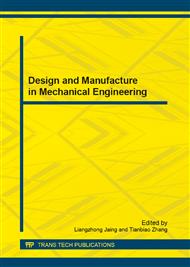[1]
S. Fafard, K. Hinzer and S. Raymond, Science, Vol. 274(1996), p.1350.
Google Scholar
[2]
J. Phillips, K. Kamath and P. Bhattacharya, Appl. Phys. Lett, Vol. 72(1998), p. (2020).
Google Scholar
[3]
S. Kim, H. Mohseni and M. Erdtmann, Appl. Phys. Lett, Vol. 73(1998), p.963.
Google Scholar
[4]
W. M. Zhou and C. Y. Wang, Acta. Phys. Sin, Vol. 532004), p.4308(in chinese).
Google Scholar
[5]
K. Brunner, Rep Prog Phys, Vol. 65(2002), p.27.
Google Scholar
[6]
M. C. Xu, Y. Temko and T. Suzuki, J. Appl. Phys, Vol, 98(2005), p.083525.
Google Scholar
[7]
J. E. Prieto and I. Markov, Phys. Rev. B, Vol. 72: 205412(2005).
Google Scholar
[8]
A. V. Dvurechenskii, A. V. Nenashev and A. I. Yakimov, Nanotechnology, Vol. 13(2002), p.75.
Google Scholar
[9]
C . Pryor, J. Kim, L. W. Wang and A. J. Williamson, J. Appl. Phys, Vol. 83(1998), p.2548.
Google Scholar
[10]
M. Califano and P. Harrison, Phys. Rev. B, Vol. 61(2000), p.0959.
Google Scholar
[11]
Y. Kikuchi, H. Sugii and K. Shintani, J. Appl . Phys, Vol. 89(2001), p.1191.
Google Scholar
[12]
M. A. Makeev and A. Madhukar, Phys. Rev. Lett, Vol. 86(2001), p.5542.
Google Scholar
[13]
A. D. Andreer, J. R. Downes, D. A. Faux and E. P. O'Reilly, J. Appl. Phys, Vol. 86(1997), p.297.
Google Scholar
[14]
G. S. Pearson and D. A. Faux, J. Appl. Phys, Vol. 88(2001), p.730.
Google Scholar
[15]
B. Jogai, J. Appl. Phys, Vol. 88(2000), p.5050.
Google Scholar
[16]
F. Glas, J Appl Phys, Vol. 90(2001), p.3232.
Google Scholar
[17]
E. Pan, B. Yang, J. App. l Phys, Vol. 90(2001), p.6190.
Google Scholar
[18]
T. Benabbas, Y. Androussi and A. Lefebvre, J. Appl. Phys, Vol. 86(1999), p.964.
Google Scholar
[19]
A. E. Romanov, G. E. Beltz, W. T. Fischer, P. M. Petroff and J. S. Speck, J. Appl. Phys, Vol. 89(2001), p.4523.
Google Scholar
[20]
G. R. Liu and Jerry .S. S. Quek, Semicond Sci Technol, Vol. 17(2002), p.630.
Google Scholar
[21]
C. Y. Cai and W. M. Zhou, Acta. Phys. Sin, Vol. 56(2007), p.4841 (in chinese).
Google Scholar
[22]
T. I. Kamins, E. C. Carr, R. S. Williams and S. J. Rosner, J. Appl. Phys, Vol. 81(1997), p.211.
Google Scholar
[23]
F. M. Ross, J. Tersoff and R. M. Tromp, Phys. Rev. Lett, Vol. 80(1998), p.984.
Google Scholar
[24]
W. M. Zhou, C. Y. Wang, Y. H. Chen and Z. G. Wang, Chin Phys, Vol. 15 (2006), p.1315.
Google Scholar
[25]
T. Benabbas, Y. Androussi and A. Lefebvre, J. Appl. Phys, Vol. 86(1999), p.945.
Google Scholar
[26]
P. Liu, Y. W. Zhang and C. Lu, Phys Rev B, Vol. 68(2003), p.95314.
Google Scholar
[27]
H. T. Johnson and L. B. Freund, J. Appl. Phys, Vol. 81(1997), p.6081.
Google Scholar
[28]
D. J. Eaglesham and M. Cerullo, Phys. Rev. Lett, Vol. 64(1990), p. (1943).
Google Scholar
[29]
W. M. Zhou, C. Y. Cai, S. Y. Yin and Wang C Y, Appl. Surf . Sci, Vol. 255(2008), p.2400.
Google Scholar


